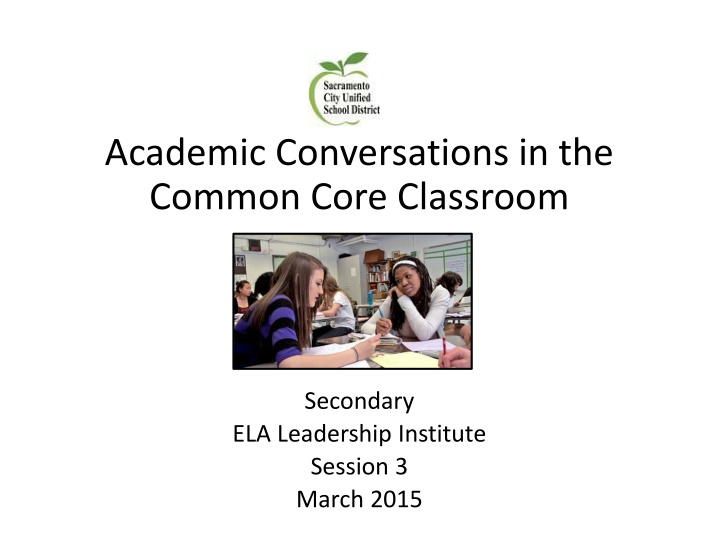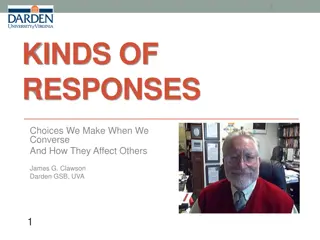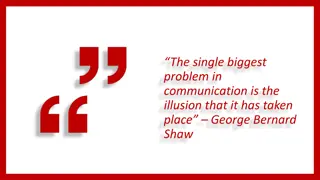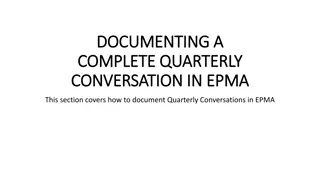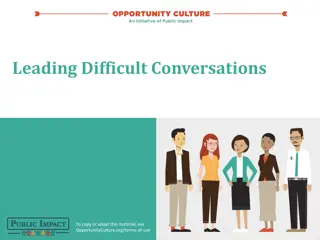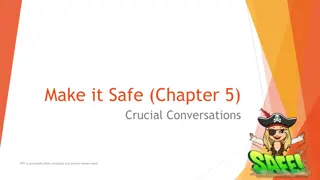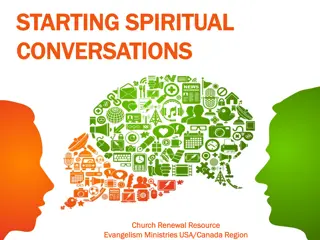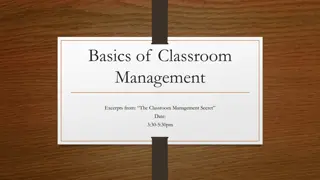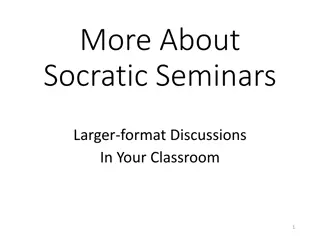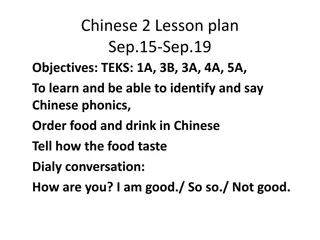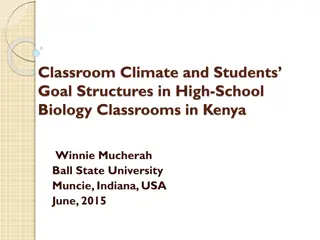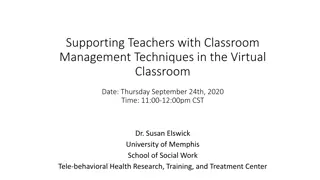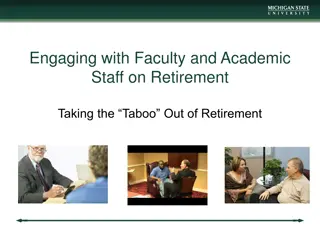Academic Conversations in Common Core Classroom
Strategies for facilitating academic conversations, increasing depth of knowledge, and creating prompts for deeper student understanding in the context of Common Core standards. Delve into the levels of complexity and types of thinking required for effective academic discourse.
Download Presentation

Please find below an Image/Link to download the presentation.
The content on the website is provided AS IS for your information and personal use only. It may not be sold, licensed, or shared on other websites without obtaining consent from the author.If you encounter any issues during the download, it is possible that the publisher has removed the file from their server.
You are allowed to download the files provided on this website for personal or commercial use, subject to the condition that they are used lawfully. All files are the property of their respective owners.
The content on the website is provided AS IS for your information and personal use only. It may not be sold, licensed, or shared on other websites without obtaining consent from the author.
E N D
Presentation Transcript
Academic Conversations in the Common Core Classroom Secondary ELA Leadership Institute Session 3 March 2015
PURPOSE and OUTCOMES Return to the framework for using the CCSS standards for Reading/Literacy to drill down deeply into one text or topic. Learn three strategies for facilitating students through successive steps using academic conversations.
Building Academic Conversations Increasing depth of academic conversations Implementing conversation protocols Establishing expectations for academic conversations Setting up physical environment that promotes conversation Rare Occasional Frequent
Increasing Depth of Conversations Depth of Knowledge/Levels of Complexity 4 Extended Thinking Requires connections and extensions, high cognitive demands and complex reasoning, creation 3 Strategic Thinking Requires reasoning, developing a plan or a sequence of steps, more than one reasonable approach 2 Skill/Concept Use information or conceptual knowledge, two or more steps 1 Recall/Reproduction Recall a fact, information, or procedure; process information on a low level
Creating academic conversation prompts that will progressively deepen students understanding 8 & 9 3 & 7 6 4 & 5 2 Vocab might be here, too. 1
Creating academic conversation prompts that will progressively deepen students understanding Churchill s Blood, Toil, Tears and Sweat speech Does Churchill make a strong enough argument for victory at all costs ? 8 & 9 3 & 7 What effect does Churchill s use of the pronouns I, you and we have on the speech? 6 4 & 5 2 What was Churchill s main message? 1
Creating academic conversation prompts that will progressively deepen students understanding 8 & 9 3 & 7 6 4 & 5 2 Vocab might be here, too. 1
Paraphrasing and Summarizing a Text Teacher models how to paraphrase and summarize a text, thinking aloud to demonstrate things noticed and the process used to determine importance Students paraphrase and summarize, then compare their work with a partner. They note similarities and discuss differences. Revisions are made. Students share with another set of partners or whole class to evaluate their work.
Creating academic conversation prompts that will progressively deepen students understanding 8 & 9 3 & 7 6 4 & 5 2 Vocab might be here, too. 1
Vocabulary Tea Party with Tier III Words Tier II Words Academic Non-specific to content areas Examples: redundant, distribute Tier III Words Academic Specific to content areas Examples: magma, chrysalis Distribute vocabulary words (between 1-3) to students. These should be words students have been introduced to but are still developing. Have students collect in groups of 2-3 and mingle, relating their vocabulary words to each others word in way that make sense Allow for 2-3 mingling rounds Optional follow up: students can recreate some of the sentences they produced or heard for the whole group, for different partners or in writing
Tenth Grade: Industrial Revolution Lesson Find two other people with different vocabulary words (different colored papers) Work together to determine the relationship among your words. When possible, use the signal words provided to demonstrate their relationship. When finished, form another triad and repeat.
Sequence Comparison Cause/Effect Like __, __ Consequently, __ First, __. Then __ ___. Similarly, __ As a result, ___ Before ___, ___ Both ___ Because __, ___ Afterward __ Although ___ __. Therefore, __ By then, ___ In contrast, ___ ___ led to ___ Later ___ Unlike __, __ Since __, __ Finally, ___
Creating academic conversation prompts that will progressively deepen students understanding 8 & 9 3 & 7 6 4 & 5 2 Vocab might be here, too. 1
Craft and Structure: Noticing with a Partner The teacher models something she has noticed about craft or structure a similar feature of craft or structure in a different text a different feature in the same text The teacher sets a focus or parameters for noticing and asks students to determine the significance of what they ve noticed. Partners notice, decide on what to choose and craft a statement about its significance.
Noticing Imagery in Eleven by Sandra Cisneros The way you grow old is like an onion rings inside a tree trunk little wooden dolls that fit one inside another
Seventh Grade: Notice Imagery in Hairs Notice the Imagery that Sandra Cisneros uses in Hairs Choose at least one of the images and jot down how the image is important to the poem. As you listen to your partner s example, help him or her to be as specific as possible about how their image is important to the poem. Use clarifying questions. Both partners are prepared to share with class.
Clarifying Questions Can you elaborate on ? What do you mean by....? Can you clarify the part about ? Please say more about How does it support your point that Can you be more specific about
Increasing Depth of Conversations Sticking to one text or topic enables your students to progressively drill deeper into its meaning.
Think-School Team-Share Review your handouts and notes from this session and ponder this question: What is one action you can take immediately to improve the quality or quantity of academic conversations in your classroom? Be prepared to discuss why you chose this action and how you will undertake it.
